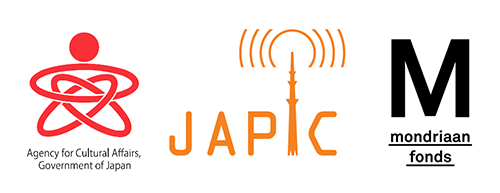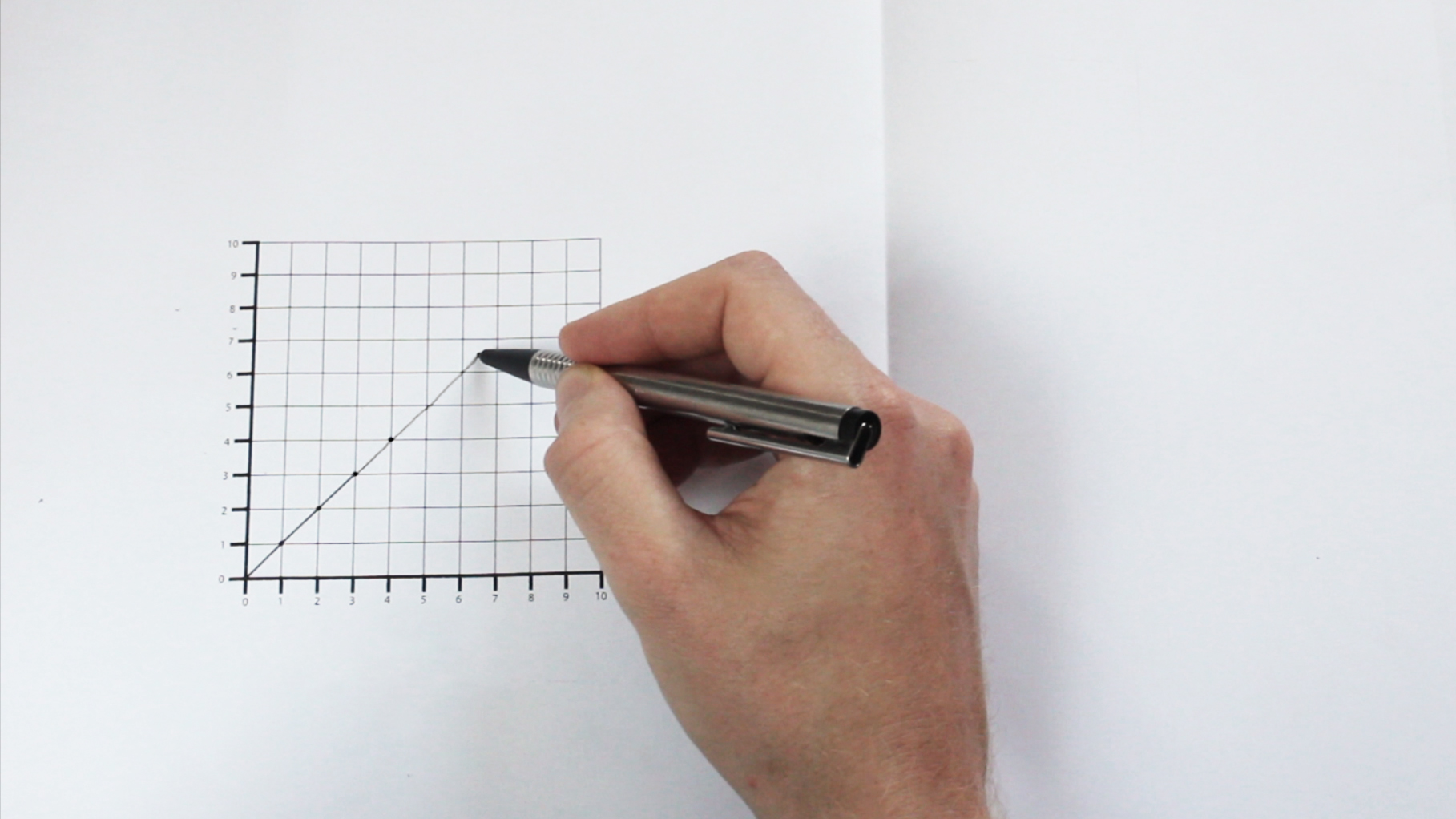
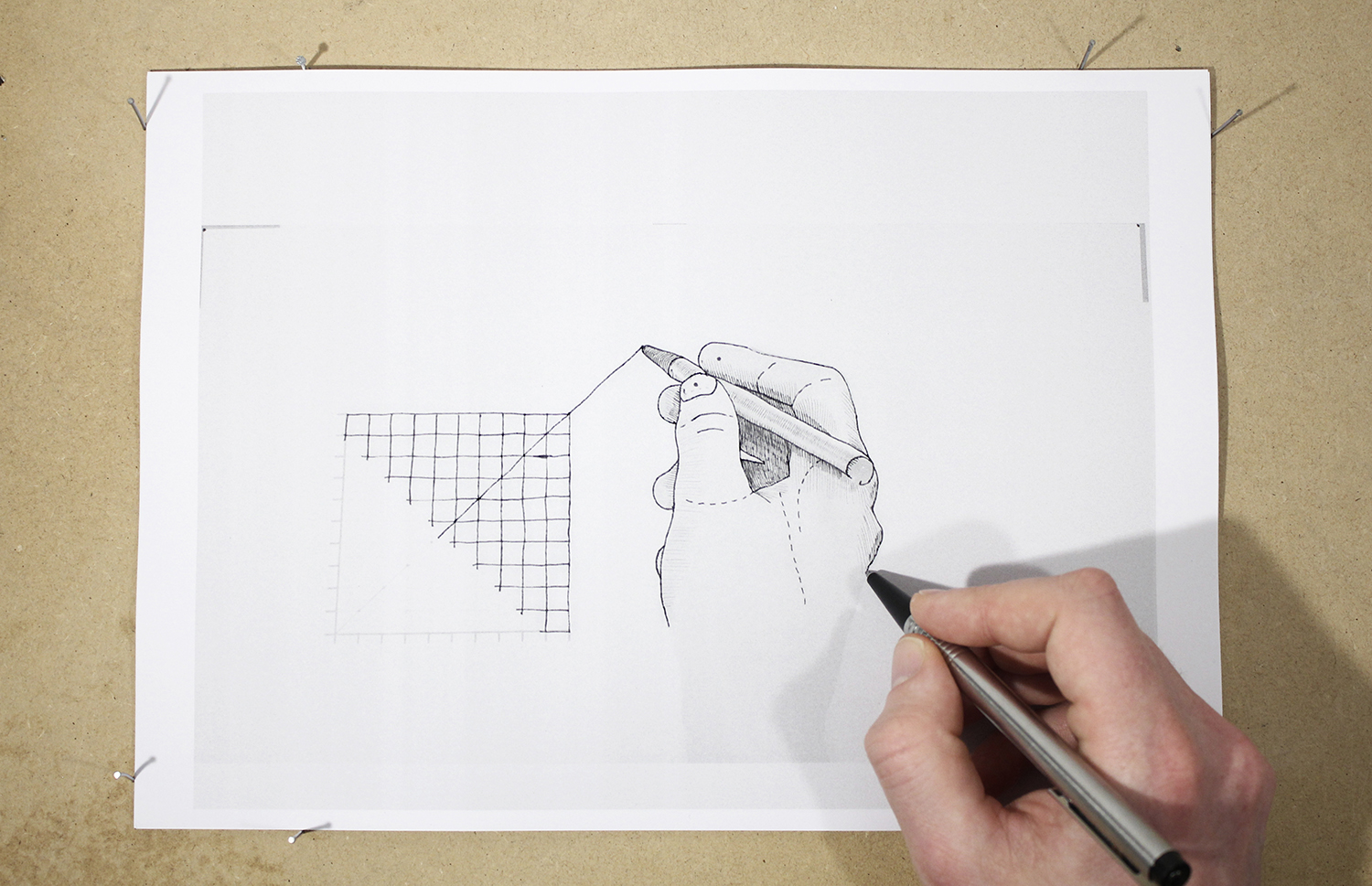
1. Extrapolating a line through the grid.
2. Observing and tracing the extrapolation process.
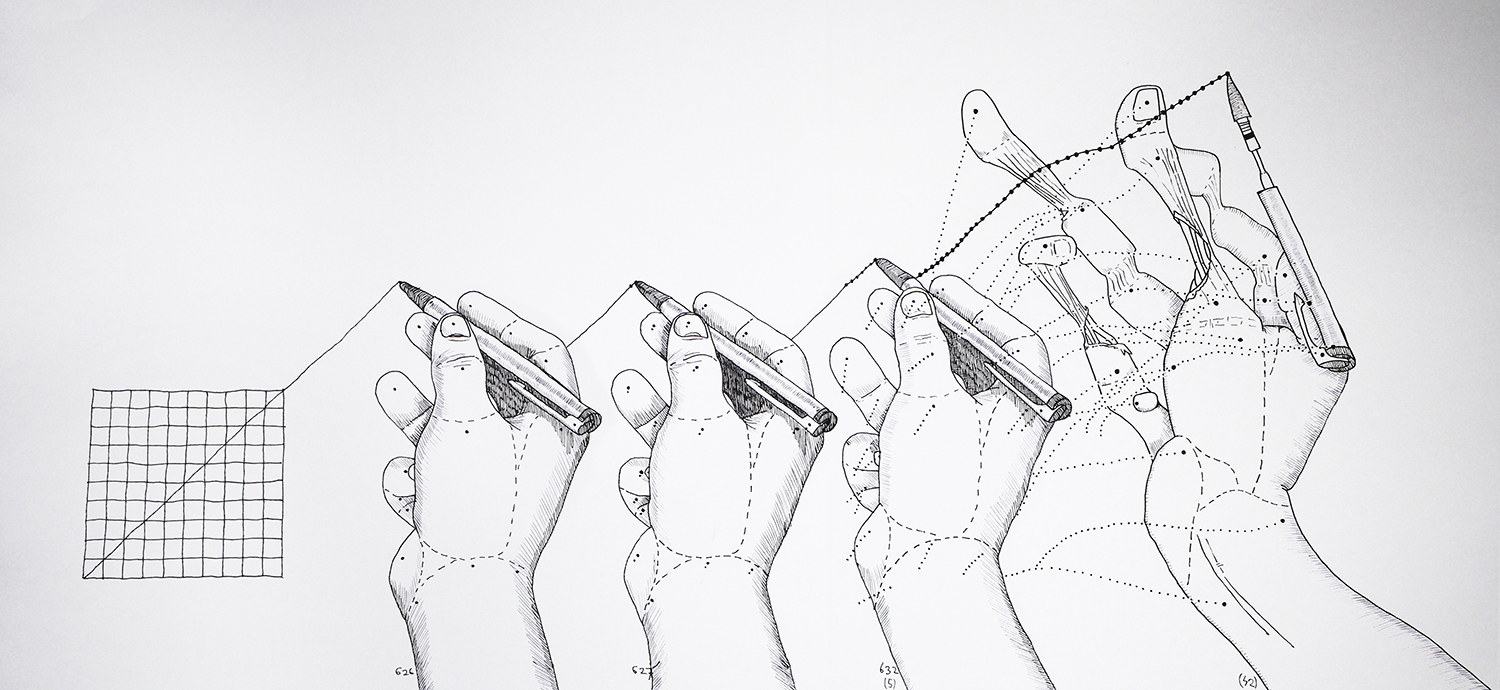
3. Extrapolating the extrapolation process.
The hand is divided in different segments, through the subtle rotation and perspective shift each segment of the hand is moving in a slightly different direction. The last two frames of this recorded and traced movement are used to determine the direction of each segment. The small dots indicate the current and previous positions of the segments as a motion path, that can then be extrapolated with the “straight-forward” animation technique.
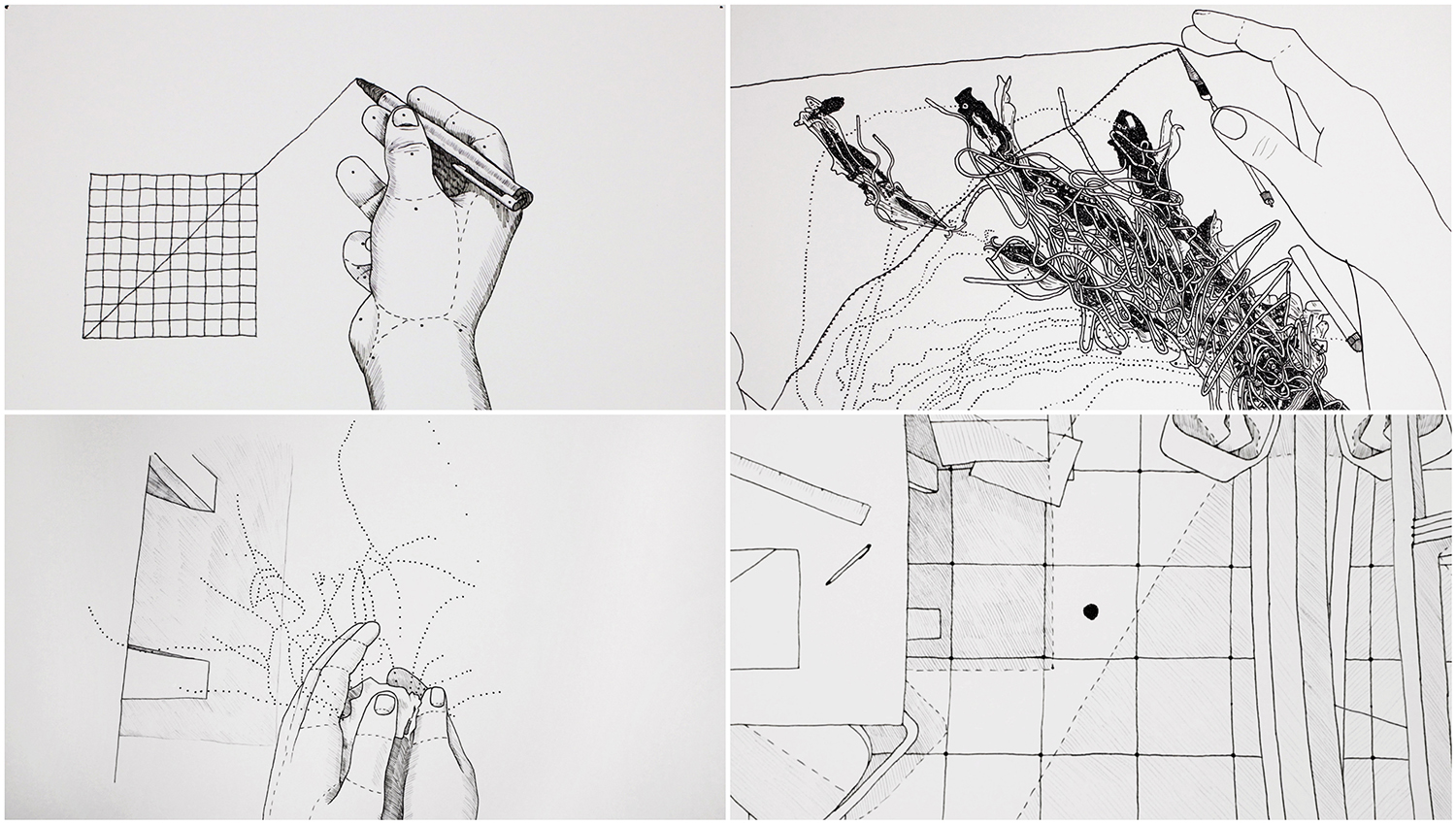
The transitions between recorded movements and extrapolated movements are all following the trend of breaking different borders. The first transition occurs when the line exceeds the borders of the grid. In the second transition the line leaves the sheet of paper. The following extrapolation process breaks the borders of the rectangle representing the desk. And finally the workspace (studio) is revealed. From this wider angle a more abstract and systematic extrapolation technique is used that reflects back to the beginning.

In this abstract extrapolation technique the dots that represent the position of the different segments coincide with the lines that shape them. Because of this the dots do not only determine the position of the segments but also the shape.
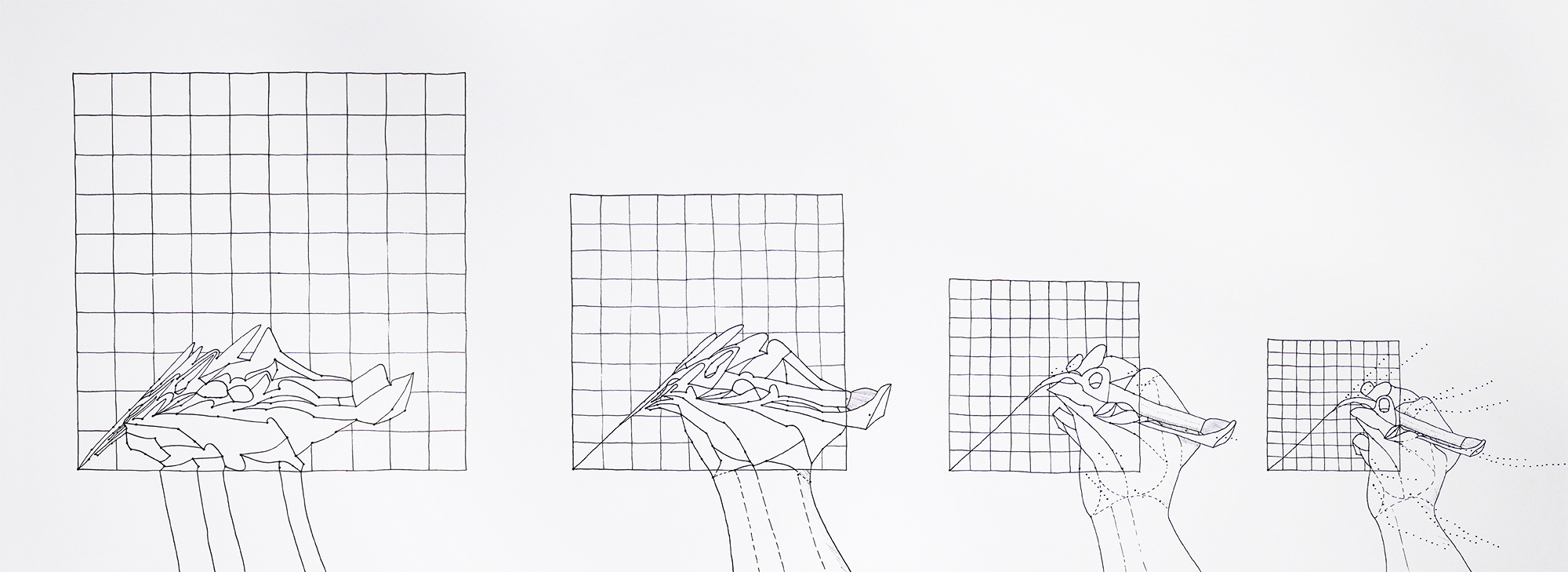
This technique is used for both the zoom out movement in the studio (where we zoom in on the extrapolation of zooming out) and the zoom in movement in the grid at the end (where we zoom in on the extrapolation back into one point).
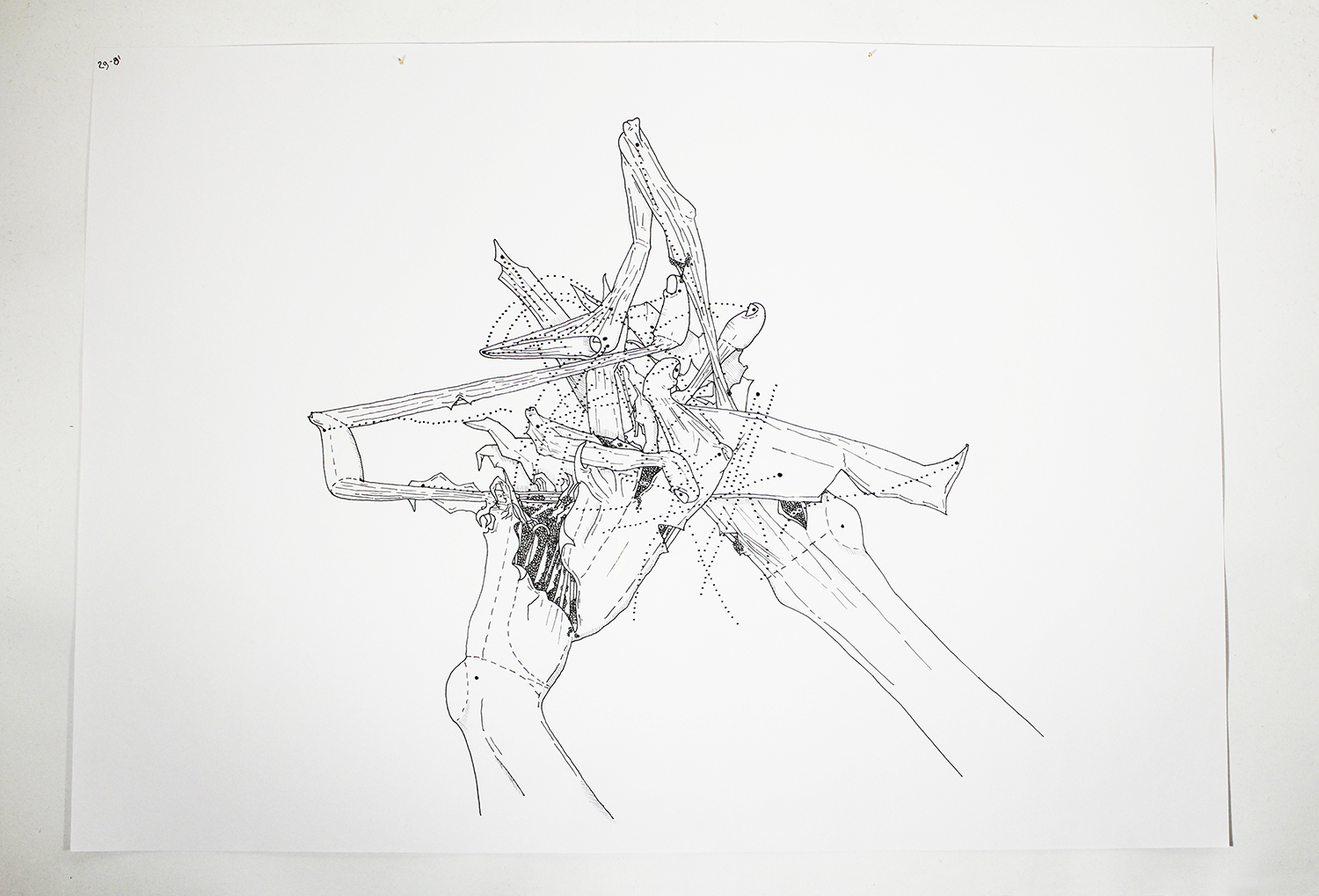
One might expect that the extrapolation of the crumpling of a sheet of paper would result in something that would gradually shrink into itself. But when crumpling a sheet of paper the different parts of the hand however move in many different directions. Leading to this slowly expanding composition of hand segments and their imagined (anatomically inaccurate) connections.
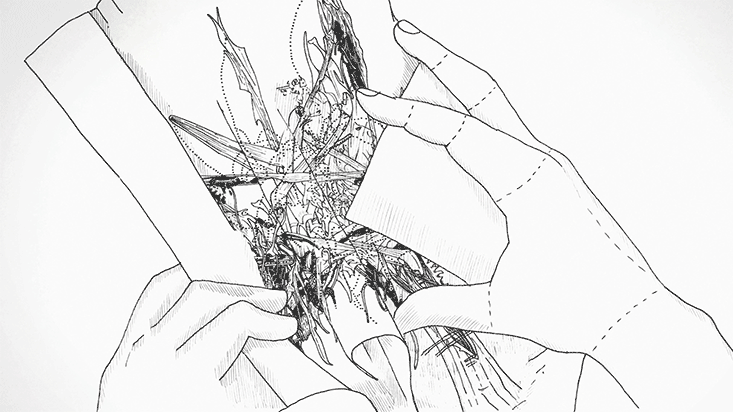
Paper crumpling loop (forward, observing).
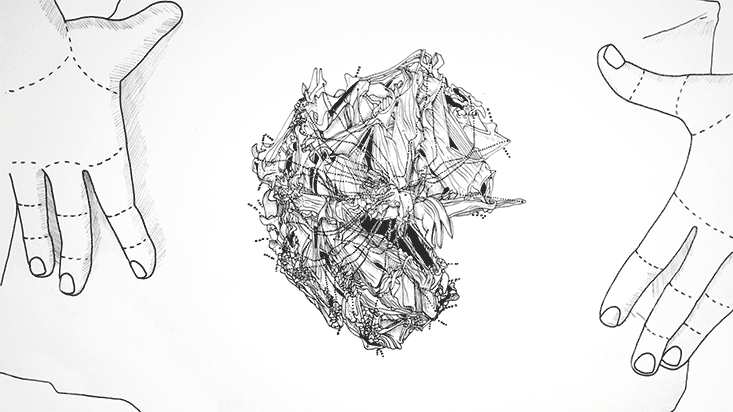
Paper uncrumpling loop (Backward, reflecting).
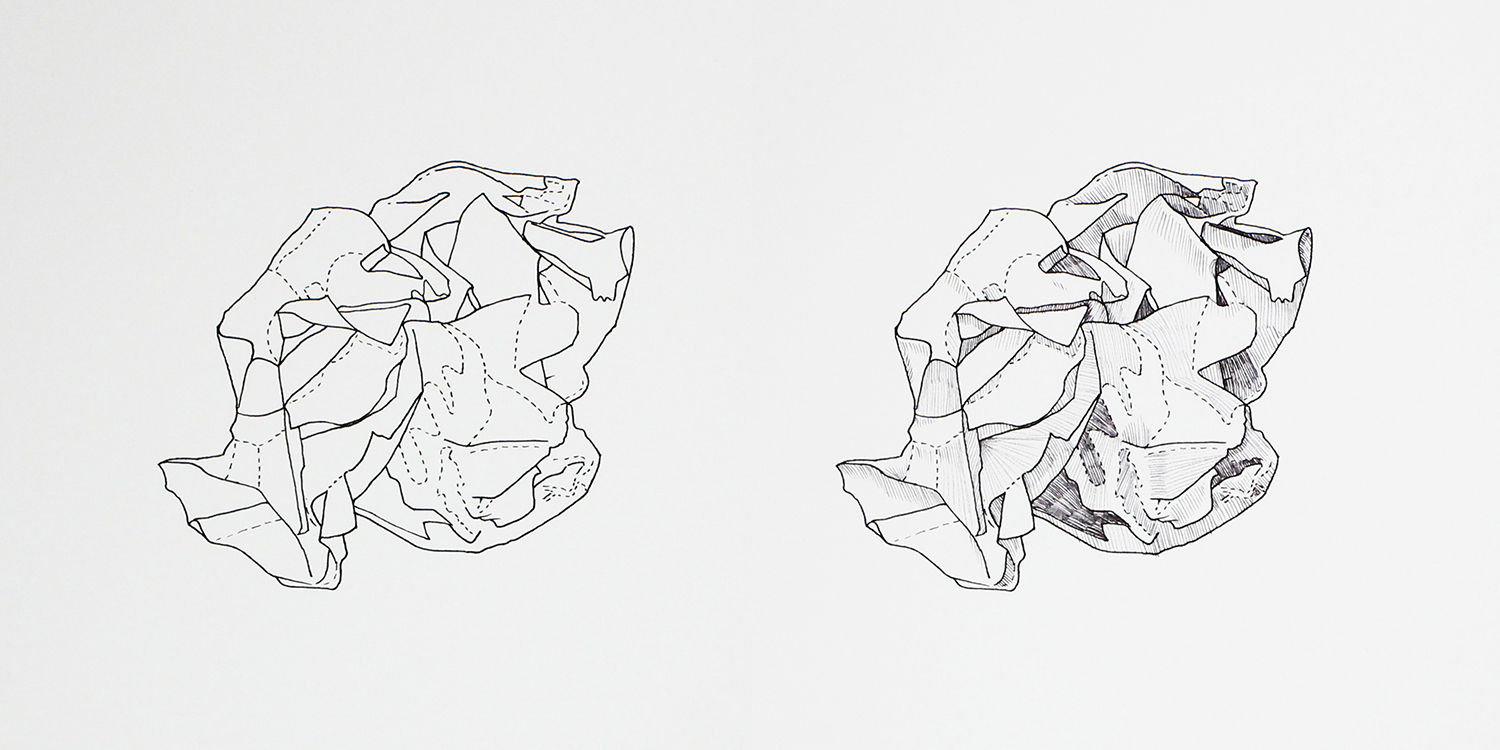
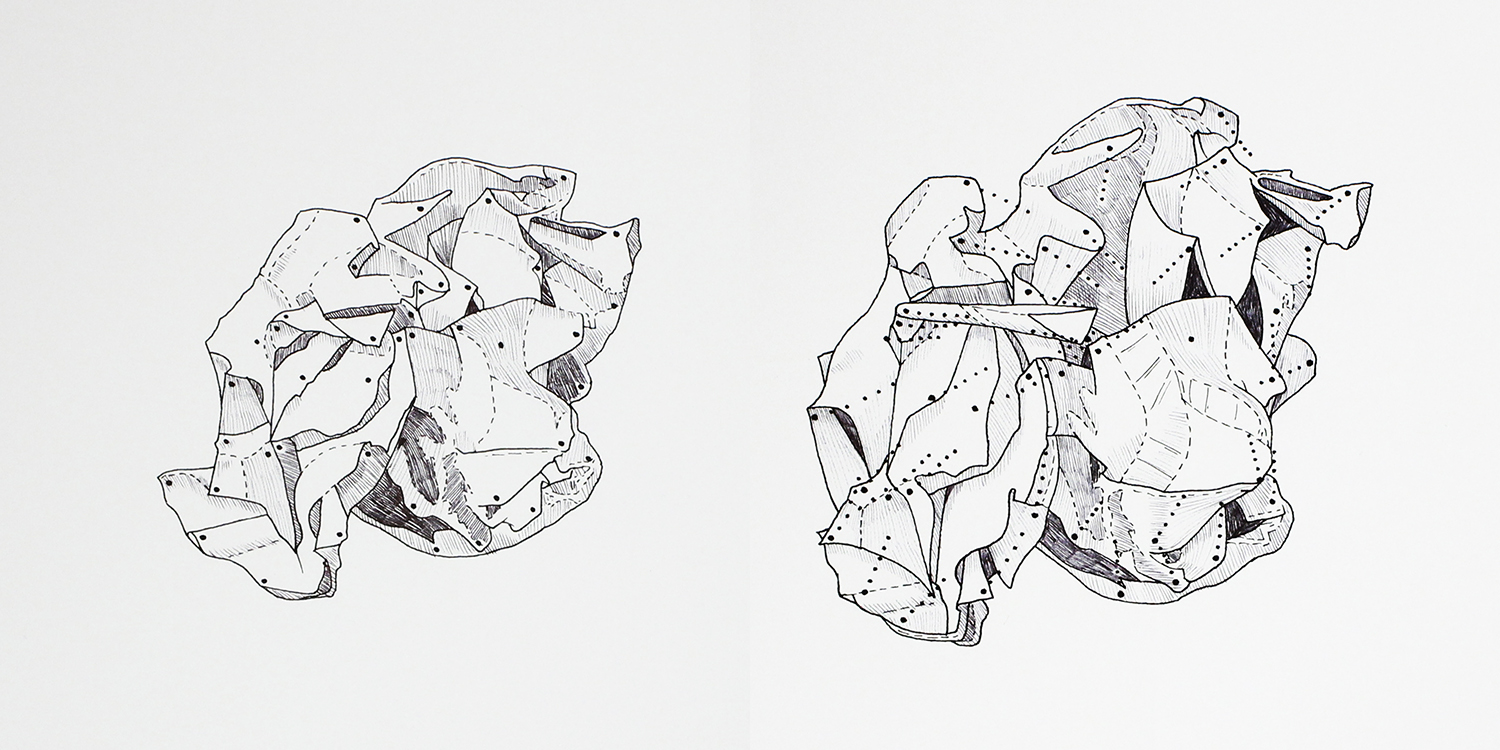
The energy of the hands is transferred to the crumpled piece of paper. When the hands let go of the paper the material responds by trying to transform back to it’s original shape. This recovery process is the input for the following extrapolation scene, and the transition from subject to object.
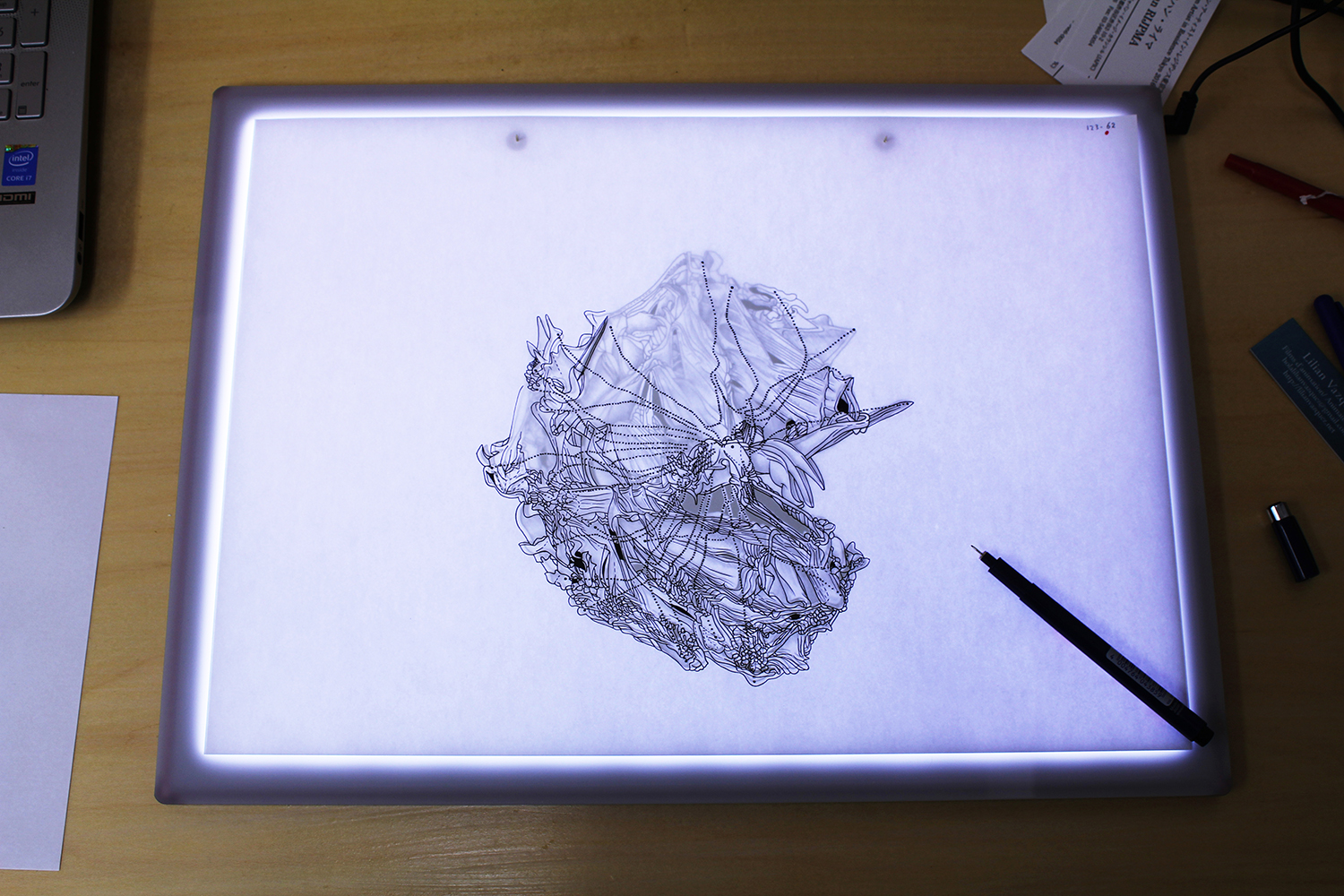
In this “Straight-Forward” way of animating each drawing is only based on the previous drawing. Forgetting to trace a certain part will make it disappear for all the following drawings. The animation process therefor seems to express qualities that can also be found in the limitations and risks of an extrapolation process that goes far beyond it’s observations. This paper extrapolation was done by intuitively repeating and stretching the shapes that would emerge from the initial crumpled paper composition.
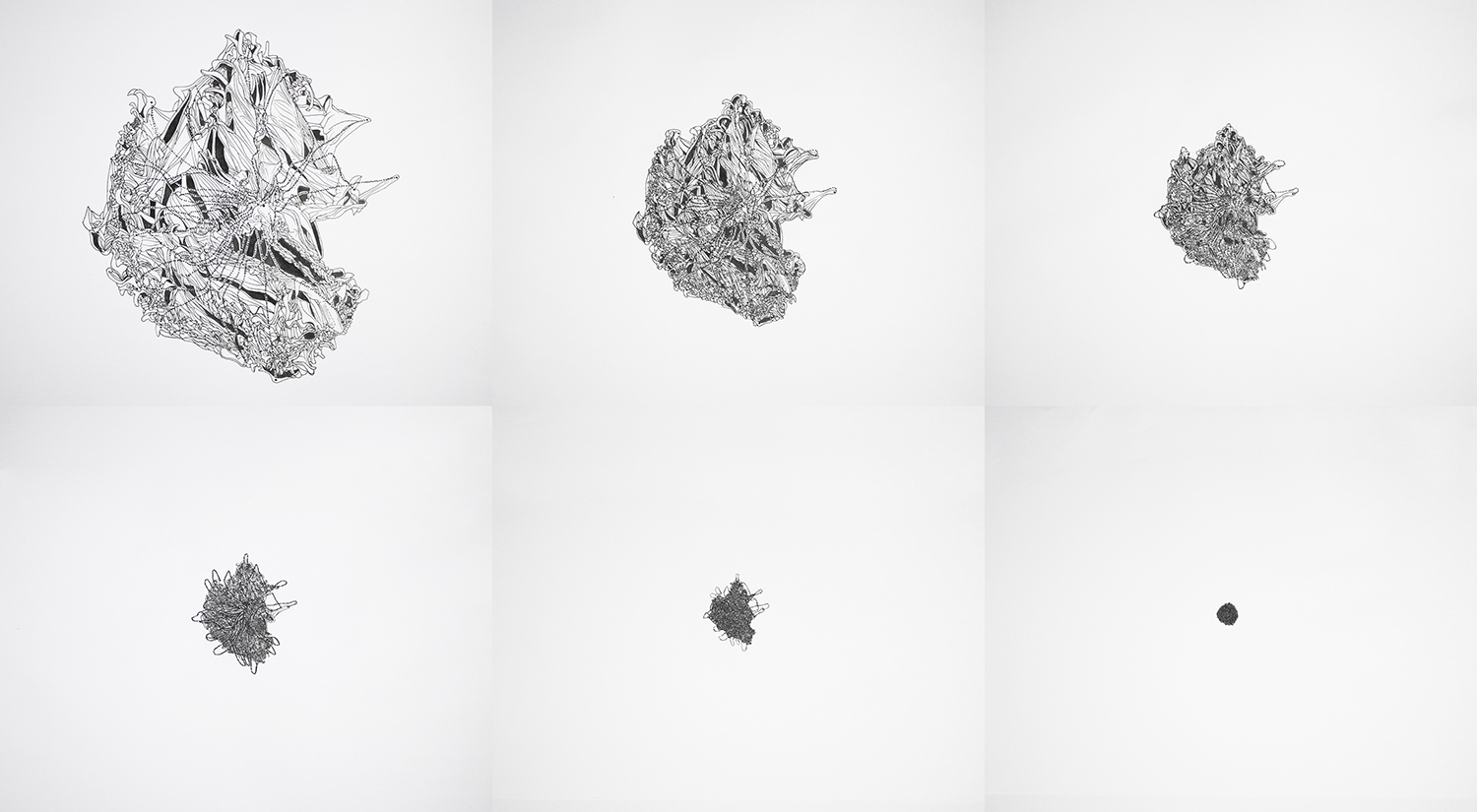
The zoom out transition was done by gradually moving each segment towards the center and at the same time scaling down the complete drawing a few per cent with a photocopier. And basing the next drawing on this scaled down copy instead of on the original previous drawing.
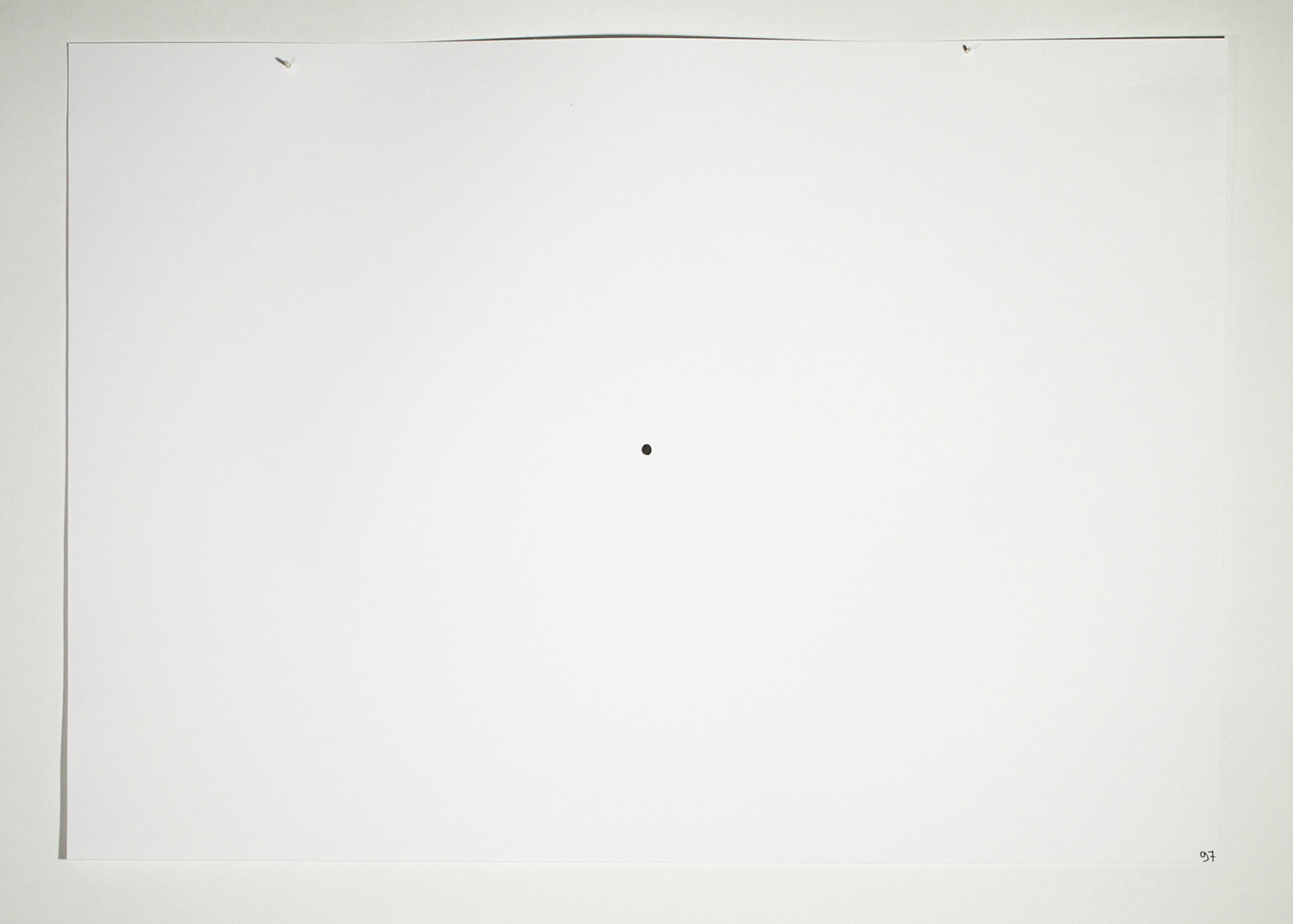
While many of these quite detailed drawings would take several hours to complete, during this zoom-out scene these hours of tracing and drawing where quickly reduced to just a one second dot.

This whole process started in my home studio in Utrecht, the Netherlands and continued in the 3331 studio in Tokyo, Japan during my JAPIC A-AIR Residency. This studio is also the workspace that can be seen in the animation, and therefor the animation is also a physical extrapolation from The Netherlands to Japan (and back).
This work was created with support from ”Animation Artist in Residence Tokyo 2016”
part of the Agency for Cultural Affairs, Government of Japan (Bunka-cho) ”Project to invite
overseas creators of media arts 2016.” and the Mondriaan Fund.
